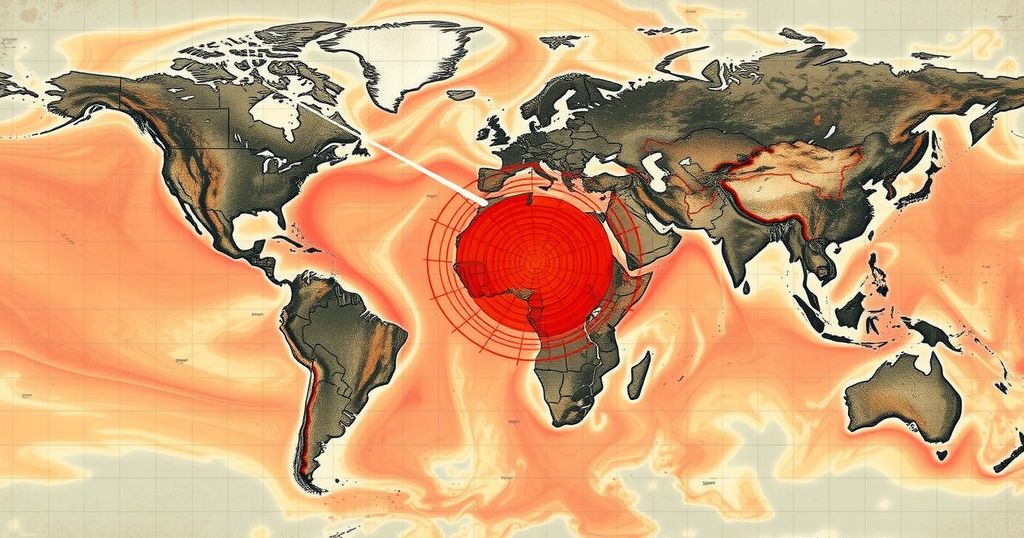On January 2, a 6.1-magnitude earthquake occurred in Chile near Calama, followed by reports of smaller quakes across California and Alaska. This seismic activity reflects consistent geological movements in these regions, highlighting the importance of monitoring by the USGS.
On January 2, a significant 6.1-magnitude earthquake struck Chile, with its epicenter located near Calama at a depth of 99 kilometers (approximately 61.5 miles), as reported by the United States Geological Survey (USGS). At the time of this report, authorities indicated that 25 individuals had felt the seismic event. This tremor occurred shortly after a smaller 4.7-magnitude quake was recorded in California on January 1, centered in Cobb, with a shallow depth of 1.1 kilometers (around 0.7 miles).
Adding to this sequence of earthquakes, a 3.3-magnitude quake was detected in Alaska on December 30, near Nikolski, at a depth of 39.5 kilometers (approximately 25 miles). This event followed another 3.3-magnitude quake in California on the same day, originating from Fort Bidwell at a depth of 3.4 kilometers (about 2.1 miles).
Earlier incidents included a 6.7-magnitude earthquake on December 27, occurring in the Kuril Islands at a substantial depth of 162.6 kilometers (about 101 miles). Before this, a 3.6-magnitude quake was reported in Alaska on December 26, near McCarthy, with a comparatively shallow depth of 8.1 kilometers (around five miles).
Also, on December 25, California experienced a 3.0-magnitude earthquake centered in Clayton at a depth of 13.2 kilometers (about 8.2 miles). This activity followed a more powerful 5.9-magnitude earthquake in Cuba on December 23, located in Guisa at a depth of 22.2 kilometers (approximately 13.8 miles).
This report reflects the seismic activity encountered in various regions, particularly in Chile, California, and Alaska. Earthquakes are common geological events that can occur anywhere in the world, but their magnitudes and impacts can vary significantly. Understanding the seismic activity, as recorded by respected institutions like the United States Geological Survey, is crucial for public awareness and preparedness. The sequence of events listed illustrates a notable pattern of seismic occurrences in a short timeframe, highlighting the dynamic and sometimes volatile nature of tectonic movements in these earthquake-prone areas.
In summary, the recent 6.1-magnitude earthquake in Chile underscores the ongoing seismic activity present across various global regions. The USGS reports indicate a string of earthquakes, each with varying magnitudes and depths, reflecting a continual pattern of tectonic movement. The sequence of events from late December to early January reveals an interconnected series of earthquakes that may inform future monitoring and preparedness efforts.
Original Source: 1430kasi.iheart.com






